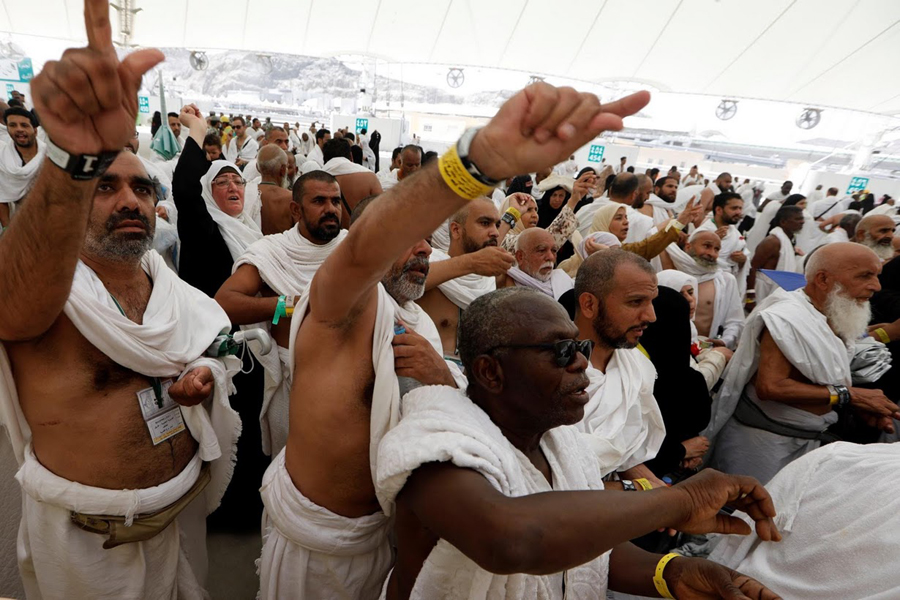On the plain of Arafat, I stood among hundreds of thousands of people who were all trying to reach the top of Mount Mercy, whilst covering my first Hajj after 20 years as a photographer for Reuters.
Instead of praying in the traditional way, people were doing it in the “21st-century” way — using their mobile phones to read out prayers and take pictures at the mountain.
There was one woman sporting a bright turquoise ring that caught my eye. Decades of Hajj tradition dictate the norm is to not wear jewellery.
My first time walking around the holy city of Mecca, I was amazed by the mixture of people. There were Africans, Asians, Europeans, Americans, and Arabs, all coexisting in this tiny place.
In Jamarat, during the stoning of the devil ritual, where pilgrims hurl pebbles at a giant wall, men and women mixed together without the restriction of gender segregation that has been custom in public places in Saudi Arabia for decades.
One day, after taking pictures of sunset prayers at the Grand Mosque, I sat on the side of the road watching thousands of men and women file out. I was surprised at how closely they were all crowded together, something that is frowned upon in most Muslim countries.
That is part of what makes this place so special for me; the Hajj unites all Muslims, even those who might be waging war against each other back in their own countries.
“When the war began in Yemen I never would have imagined that I would one day have the capability to come to Hajj,” Ibtissam Al Assiri, a 39-year-old pilgrim from Yemen, told me. “God bestowed this place upon Muslims to unite us.”
‘THE HOUSE OF GOD’
One of the lasting impressions I have is from the sound of pilgrims reciting in unison the main verses of the Hajj rituals. It sounded like a perfectly-synched orchestra. It gave me chills and filled my heart with joy.
More than two million pilgrims attended this year’s five-day ritual, which retraces the route Prophet Mohammed took 14 centuries ago. Many Muslims save their entire lives to attend.
At the stoning ritual, where pilgrims hurl pebbles at three walls in a symbolic commitment to resist the devil’s temptations, I met two 60-year-old women in wheelchairs at their first Hajj.
 Muslim pilgrims cast stones at a pillar that symbolises Satan. Reuters photo
Muslim pilgrims cast stones at a pillar that symbolises Satan. Reuters photo
Djumhuriya, from southern Iraq, made the three-day journey by car to reach Mecca.
“I have dreamed of performing Hajj for a long time. It took me so long to make it come true. The road from Basra was long, but I was so excited to see the Kaaba, ‘the house of God.’ Today, I feel like I am born again,” she told me.
Sanjeeda Bagam came from Pakistan with her son, who was pushing her wheelchair.
“When I arrived in Mecca and saw the Kaaba, I had a feeling like never before: joy erased my entire past, as if I only knew the present right here,” she said.
The extreme heat is a challenge at Hajj, with daytime temperatures topping 40 degrees Celsius (104 Fahrenheit) this week. As a photographer, I ended up walking a lot more than the 40 kilometres (25 miles) for an average pilgrim, according to a Reuters report.
The light is also very harsh during most of the day. That is a photographer’s nightmare, because it means there were only a couple of hours just after sunrise and then again just before sunset when I could get the pictures I wanted.